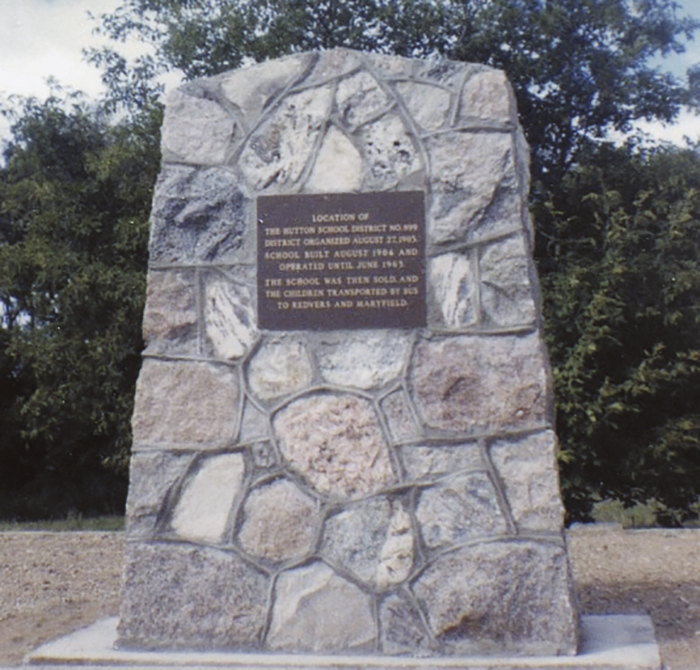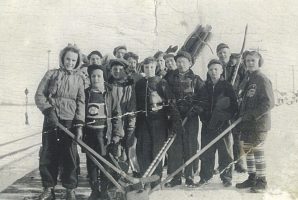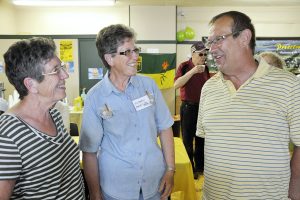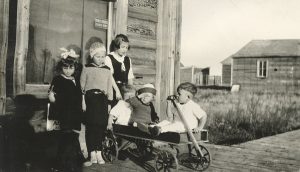By Grace (Brownell) Schuster – Calgary, Alta.
This cairn marks the parcel of land which was donated by the Hutton family for the purpose of erecting a schoolhouse for the district on the southeast corner of section 4/9/31/W 1st in southeastern Saskatchewan.

Homesteaders were just beginning to settle this area, but they had the foresight to plan early for the education of their children. This was a one-room schoolhouse with a potbelly stove and stovepipes running the full length of the building!
In 1903 when this district was organized, Saskatchewan had not yet become a province and was still considered North West Territories. The building was completed in 1904 and Saskatchewan became a province the following year.
I am grateful that this cairn was erected in 1969 as a landmark for generations to come.
By 1963, the original Hutton School building was in disrepair and there were very few children in the district to attend classes at this point.
I attended this school from Grades one to eight. Then for Grades nine and 10, I had to take correspondence lessons, but continued to attend the classroom simply as a means of discipline for study hours.
My grandmother coached me in some subjects where she could, as she was a former schoolteacher in Nova Scotia before coming west to homestead with her husband, a tailor!
My grandparents homesteaded in this district in 1903. From what I remember my grandmother telling me, she was the first homestead woman in this area. As other pioneer women later joined their husbands on their homesteads, she was instrumental in starting a roaming library because homesteaders didn’t bring many books with them.
The ladies in this “reading circle” would meet once a month to discuss and exchange their books. This provided a social outlet and bringing a bit of culture into the lives of these hardworking pioneers.
Bussing was still unavailable for me to attend high school. This was about 1952-54. Therefore, for Grades 11 and 12 I lived with my aunt and uncle on their farm two miles southwest of Maryfield, Sask., and attended high school in town. It was good to be able to go home for most weekends.



